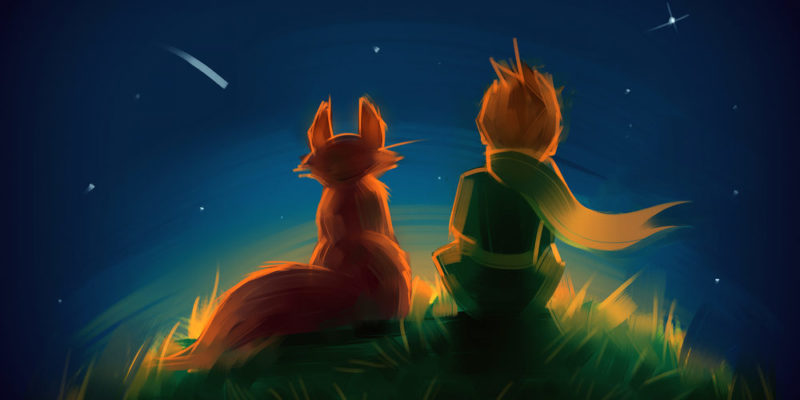Narration is a storytelling technique that involves the delivery of a story or event in a written or spoken form. It is a powerful tool used in literature, film, television, and other media to convey a message, evoke emotions, and capture the audience's attention. In this article, we will explore the different types of narration, the importance of narration in storytelling, and tips for effective narration.
What is narration (storytelling)?

A narrative is a sequential succession of events or actions, carried out by real or imaginary characters, in a certain place and for a certain amount of time, told by someone in a specific way. That is, in a certain way a narrative is equivalent to a story, a story or a tale, although they are not entirely synonymous.
The narratives are inherent to the human being, and he has practiced them from the most ancient times to the present, in formal ways (as in literature ) or informal (as in everyday speech ). The religious, national, family imaginary and even personal memory have the form of narration and are transmitted as such.
The science that studies narratives is known as narratology.
Origin of the narrative (storytelling)

The narrative is as old as humanity itself . We suppose that the first stories arose in the heat of the bonfires, when the primitive tribe gathered to eat and listen to the stories of the hunt, or the origin myths told by the old sages.
Initially, the stories were loaded with mythical and religious content . They were founding stories that tried to answer the great questions of humanity: what are we doing here? Where we go? Where we come from?
Later, the stories acquired an epic-marvelous content . They served to explain and shape the sense of belonging of nations, considering them descendants of mythical heroes and great actions, or the result of tremendous wars that it is not known if they actually occurred.
Types of Narration:
There are several types of narration that writers and storytellers use to engage their audience. Here are the most common types of narration:
First-Person Narration:
This type of narration involves a character in the story telling the story from their perspective. It is a highly subjective form of narration, as the audience only sees events through the eyes of the narrator.
Second-Person Narration:
This type of narration addresses the reader or listener directly, making them feel like they are part of the story. It is a relatively rare form of narration, but it can be highly engaging when done well.
Third-Person Narration:
This type of narration involves a narrator who is not a character in the story. The narrator observes events from a distance, and can provide insight into the thoughts and feelings of multiple characters.
Omniscient Narration:
This type of narration involves a narrator who knows everything about the story, including the thoughts and feelings of all characters. It is a powerful tool for creating a comprehensive and cohesive narrative.
Narrative (storytelling) elements

In any narrative, some or all of the following elements appear:
- Storyteller: The voice and point of view from which the story is told, and which may or may not be involved in the events it narrates.
- Characters: Those actors directly or indirectly involved in the story told, occupying different roles in it: protagonist (on whom the story focuses), antagonist (who opposes the protagonist), companion (who accompany the protagonist); and at different levels of importance: main characters (those without whom there would be no story) and secondary characters (accidental or accompanying characters).
- Place: Every story occurs in a place, be it real or imaginary, and events can have a greater or lesser level of interaction with the setting where they occur.
- Time: Every story involves an amount of time of the story's total duration (narrative time), as well as an amount of time elapsed between the events it narrates (story time).
- Plot: The content of the story itself, that is, the amount of actions that take place and that move the story towards its resolution and outcome.
Structure of a narrative (storytelling)

Narrating means telling a series of events in an orderly, logical and sequential way , that builds a total unity when it nears its end, and that has a sense of causality and plausibility, that is, that is credible and makes sense. In that sense, its structure traditionally involves three parts:
- Start or presentation: Also called balance situation or initial situation, it is the starting point of the story, in which the characters are introduced to us and their situation is detailed at the beginning of the plot.
- Medium or complication: The characters are led to one or several situations of complexity, which threatens the satisfaction or dissatisfaction of their desires, and which rethinks the initial schemes in which each character was found.
- End or denouement: Final part in which conflicts are resolved in one way or another, for the good or bad of the characters, and they find themselves in a new balance situation.
Narrator (storyteller) types
The choice of a narrator often determines many things about a story. In principle, there are two different considerations to make regarding the narrator:
- Narrative person: It refers to the grammatical choice of the voice of the narrator, that is, if he / she will speak in the first person (“I”, “we”) or in the third person (“he / she”, “they / they”).
- Point of view: It refers to the point of enunciation of the narrator regarding what counts, and may be:
- Protagonist: He narrates the events that happened to him, from his own point of view.
- Witness: It tells the events that happened to a third party, and may or may not be part of the story.
- Omniscient: He tells events from God's point of view : he knows everything, even what the characters think, and he can count every angle of the plot because he knows everything.
Dialogues and descriptions
 A dialogue is the moment in which the story reproduces for its readers or viewers a conversation between two or more characters , noting what each person said. Descriptions , on the other hand, are short pauses in narration that provide details and information about what characters, things, or the world around them look like.
A dialogue is the moment in which the story reproduces for its readers or viewers a conversation between two or more characters , noting what each person said. Descriptions , on the other hand, are short pauses in narration that provide details and information about what characters, things, or the world around them look like.
The Importance of Narration in Storytelling
Narration is a vital tool in storytelling, as it helps to establish the tone, mood, and atmosphere of a story. It allows the writer to convey important information about the characters, setting, and plot in a way that is engaging and immersive for the audience. Effective narration can help to build tension, create suspense, and evoke emotional responses from the audience.Narration can also help to create a sense of time and place, allowing the audience to immerse themselves in the world of the story. It can help to establish a sense of perspective, providing insight into the thoughts and feelings of the characters and their motivations. Ultimately, narration is a powerful tool for capturing the audience's attention and keeping them engaged throughout the story.
The literary narrative
 Literary narratives, as we have seen, are those that have artistic or aesthetic aspirations, and that are framed in the known narrative genres, which are:
Literary narratives, as we have seen, are those that have artistic or aesthetic aspirations, and that are framed in the known narrative genres, which are:
- Stories: Short to medium length stories, centered on a line of events that is narrated from beginning to end, with the fewest interruptions.
- Micro-stories: Hyper-short stories, often smaller than a page, that seek to condense the narrative experience to its minimum extent.
- Novels: Thick, slow and rambling narratives, in which the reader enters the universe of the characters and accompanies them during different moments of their lives, following a narrative axis in a more or less dispersed way.
- Chronicles: Short stories, generally with a recognizable grip on reality, that not only seek to entertain through the plot, but also to provide information and witness some kind of reality.
Cinematic narration (storytelling)
 The film , in its complexity, is also an art form that uses narratives . When we watch a film, we are presented with characters, a plot, a time, a place and a narrator (in this case it is the camera itself), to reproduce a story audiovisually.
The film , in its complexity, is also an art form that uses narratives . When we watch a film, we are presented with characters, a plot, a time, a place and a narrator (in this case it is the camera itself), to reproduce a story audiovisually.For this reason, films with strategies similar to novels and stories can be studied . It differs in what is relevant to the film genre itself, such as the division into scenes, the types of cuts or the special effects.
How to Write Your "Who Am I" Page With Storytelling and Narration?
If you like to write, it is interesting that you have a website, not only to publicize your books or to share your blog articles. You can also use it to develop your personal brand, to tell who you are, what you do and how you do it . Because really, believe me, nothing connects with your readers more than a good personal story. It is about empathizing with them, making them feel something different so that they get hooked on your articles and books. Let's see how to write your "Who am I" page with storytelling.Not only do we tell you the theory, we also give you the example and the secrets to write it.
Narrate the “Who am I” page
To write this story, we use the classic Aristotelian scheme of the structure in three acts that is also valid for fiction: approach, middle and outcome. Surely you use it in your writing or remember it from your school years. In the approach, we must introduce ourselves, talk about our values ??and mission . In the development/knot is where the primordial thing happens. Where we learn more about your story, we see your conflict and how you have overcome obstacles. Remember that in a good story there always, always, always has to be a conflict, a change. The protagonist (that is, you) cannot be the same as at the beginning, he has to undergo a transformation. In the denouement all the points of the story must be logically linked. It is time to talk about your achievements and your vision.For the approach , instead of using a chronological order of time and counting from the oldest to the most recent, we start in medias res, that is, anticipating the conflict. This is how 90% of the current series begins, with the corpse on the ground. The whole plot tries to reconstruct what has happened back and forth. It generates a lot of expectation and engages. Start to introduce yourself, announce your values ??and anticipate what you are currently doing.
In the first part of the knot, begin to tell about childhood, what it was like as a child, what you liked to do. Why we are telling this? Because it is relevant to your story, because I was a girl trapped in words. Important: everything you tell in your story has to make sense. It is not worth telling anecdotes or jokes.
In the final part of the knot, talk about your "work", what lessons, obstacles and challenges you faced.
In the denouement, write about the "revelation" moment, the climax of the story that triggers your evolution. Also put together all the points and go back to the beginning, to rescue again the values, the mission and the vision.
Using these pieces and components of storytelling, We are sure you'll end up with a more than successful "Who am I" page. Ahhh, we forgot to tell you that on the web we use a visual trick that works very well: divide your story into paragraphs and put a headline for each part. It would be something like mini-chapters. Also, the great thing about having this page written is that you can also apply it (by shortening a paragraph) to the description of your LinkedIn profile .
Finally, remember that your "About me" page is not set in stone, it is constantly evolving just like you. You will have to modify it as you change, to count new achievements, challenges or twists in your personal and professional life.
Narration (storytelling) examples
The following are perfect examples of a narrative:
- Narrated by any movie, like Gone with the Wind .
- The count of our day that we make to our relatives when we return home.
- The count made by a witness in a trial to which he has been summoned.
- The journalistic chronicles that we find in the newspaper.
Tips for Effective Narration:
Choose the right type of narration for your story:
The type of narration you choose will depend on the tone, mood, and atmosphere you want to create in your story. Consider the perspective you want to convey and the level of insight you want to provide into the thoughts and feelings of your characters.
Use descriptive language:
Descriptive language can help to create vivid imagery and sensory experiences for the audience. Use strong verbs and adjectives to paint a picture of the world of your story.
Show, don't tell:
Instead of simply telling the audience what is happening, show them through actions and dialogue. This can help to create a more immersive and engaging experience for the audience.
Use pacing to build tension:
The pace of your narration can have a significant impact on the tone and mood of your story. Use pacing to build tension and suspense, creating a sense of anticipation and excitement for the audience.
Be consistent:
It is important to be consistent in your narration throughout the story. This will help to establish a sense of continuity and coherence, ensuring that the audience remains engaged and invested in the story.
Conclusion:
Narration is a powerful tool in storytelling, allowing writers and storytellers to engage their audience and capture their attention. By choosing the right type of narration, using descriptive language, showing instead of telling, using pacing to build tension, and being consistent throughout the story, writers and storytellers can create compelling narratives that capture the imagination of their audience. Whether in literature, film, television, or other media.
Luke is passionate about fostering student involvement and connection. He studied psychology for his major and likes learning about the past. Luke aims to specialize in artificial intelligence and cybersecurity. .
Leave a reply
Your email address will not be published. Required fields are marked *Recent post

Sport: What Is It, Types, Risks, Features, Characteristics and Examples

Dogs: Emergence, Features, Characteristics, Feeding and Breeds

Story: Definition, Elements, Structure, Features and Characteristics

